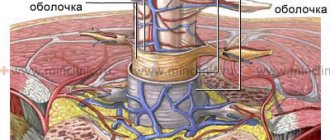The life of any modern person is filled with many different events. And it’s good if these events give joy and positive emotions. But sometimes this or that situation in which a person finds himself not only does not bring him any pleasure, but also negatively affects his nervous system. A person begins to get angry and behave aggressively, becomes nervous and irritable, and may develop psychological disorders.
Although there are many different ways to improve mental health, one of the most effective methods is auto-training to calm the nervous system. Today we’ll talk about what auto-training is, what its essence is, what auto-training exercises can be called the most popular and effective.
The history of auto-training to calm the nervous system
There is a version that auto-training arose quite a long time ago. Back in the 20th century, a neuropsychologist named Oskar Vogt discovered that some of his patients had the ability to independently enter a trance or hypnotic state when they needed it.
From that moment on, relaxation for the nervous system began to rapidly gain momentum. There were many other scientists and psychiatrists who determined the pattern of earlier recovery using similar techniques.
There is also a version that yogis have had the ability to self-soothe themselves since ancient times. This is available to them without the help of auto-training; they cope with such situations using other methods.
But still, the most important person in the history of the development of auto-training is considered to be Johann Heinrich Schultz. He worked as a neurologist in the city of Frankfurt am Main and already in 1936 became the head of the Institute of Psychotherapy. His main work was the therapy of the mentally ill. In those years, he made many discoveries on the topic of relaxation of the nervous system and the system of calming the human psyche.
Schultz published his own work entitled “Autogenic Training,” which was subsequently translated into many foreign languages.
Training “Relaxation as a method of relieving emotional stress”
Lesson 1.7
Relaxation as a method of relieving emotional stress
Target:
determination of the influence of relaxation, in the form of breathing exercises, muscle effort and relaxation, and representation of the image.
Materials:
musical pieces that are used for relaxation,
Progress of the lesson
Organizing time
Relaxation
– this is a relaxation or decrease in tone after intense mental or physical activity.
The purpose of relaxation
– relieve tension, evoke positive emotions, good mood. Relaxation is a state opposite to physical activity. Just as exercise is important, relaxation (relaxation) is also important. These are two complementary factors. Types of relaxation can be various kinds of movements, games, singing, interest in something new and unusual. Relaxation can be either involuntary (relaxation when going to bed) or voluntary, achieved as a result of the use of special psychophysiological techniques and caused by adopting a calm posture, imagining states usually corresponding to rest, and relaxing the muscles involved in various types of activity. We will talk specifically about voluntary relaxation. Relaxation is one of the steps or one of the techniques of autogenic training. It can be complete when the entire body is in a state of relaxation and rest, or it can be partial when we relax individual parts of the body with the help of special exercises. Let's watch ourselves. What position are you sitting in? Are you comfortable? Why are you sitting slouched? Why are you sitting on the edge of the chair, hunched over and legs crossed? In his book “The Art of Being Yourself,” the famous psychotherapist Vladimir Levi writes: “The combinations of various clamps are innumerable. By observing yourself a little, you can discover your “favorites,” and then it makes sense to target them specifically.”
Main part
Relaxation has no side effects, it can make you relax in just half a minute, and does not cause addiction, which is why it is much better than alcohol and various medications.
Experts are convinced that learning to control your body means learning to control your emotions.
Despite the fact that all people are different, there are several conditions that affect almost all people, helping them to achieve long-awaited relaxation and unity of soul with body. One of these relaxation techniques is traditionally considered to be soft, dim lighting and quiet, calm music. Natural sounds, such as the sound of the forest or the sea surf, are perfect.
Relaxation techniques related to breathing.
Breathing control is an effective means of influencing muscle tone and emotional centers of the brain. Slow and deep breathing (with the participation of the abdominal muscles) reduces the excitability of the nerve centers and promotes muscle relaxation, i.e. relaxation. Frequent (chest) breathing, on the contrary, ensures a high level of body activity and maintains neuropsychic tension.
Reception
While sitting or standing, try to relax your body muscles as much as possible and focus on your breathing.
On the count of 1-2-3-4, take a slow, deep breath (while the stomach protrudes forward and the chest remains motionless);
Hold your breath for the next four counts
Then exhale smoothly to the count 1-2-3-4-5-6
Relaxation techniques,
related to control of muscle tone, movement
Under the influence of mental stress, muscle clamps and tension arise. The ability to relax them allows you to relieve neuropsychic tension and quickly restore strength.
Since it is not possible to achieve complete relaxation of all muscles, you need to focus on the most tense parts of the body.
With regular exercise, tension is also relieved (and does not accumulate in the future), sleep, mood and performance improve. The exercises described below are suitable for both adults and children. They can be performed together with students in Russian language and mathematics lessons. Exercises to relax the muscles of the shoulder girdle and arms are especially suitable for children. In this way, children can quickly and effectively relax after the stress of writing. Any exercise is repeated 5-6 times.
Exercise “Shaking the water off your fingers”
»
• Take the starting position: arms bent at the elbows, palms down, hands hanging passively.
• Shake your hands with a quick and continuous movement of your forearm, like rags (5-10 seconds).
Before exercises, it is useful for children to tightly clench their hands into a fist so that the difference in the tense and relaxed state of the muscles can be more clearly felt.
Music
Music as one of the most powerful ways of relaxation is used everywhere. It is recommended to turn on soft music at the beginning of self-preparation. However, it is not recommended to use other methods of relaxation. It is known that listening to music easily evokes any associations and images in the people listening to it. Music can remind us of some emotional events from the past, and also makes us experience the emotions that the composer put into it.
Music for relaxation must meet special requirements and help listeners immerse themselves in the world of their own sensations. For this, it is most convenient to use special meditative music.
You can relax not only with the help of breathing techniques and muscle relaxation exercises. It is also possible to relax through images - so-called visualizations - visual representations. Our images have magical power over us. They can be destructive (destructive) and have a negative impact on our lives. By persistently cherishing them in our minds - for example, imagining ourselves as sick, helpless, unhappy - we actually increase the likelihood of illness and misfortune. After all, each of us acts in accordance with the existing “image of ourselves.” And if we “see” ourselves as sad or angry, then most of the time we will be sad and angry.
But images can also be positive, evoking a state of confidence, calm, joy, and strength.
For example, you can use the following images to relax:
• You bask on a fluffy cloud that softly envelops your body.
• You rock on the waves and your body feels calm and weightless.
• You lie on heated sand - on the seashore or ocean, hear the light sound of waves and feel the light and warmth of the sun's rays.
When searching for the look that best suits you, let your imagination run wild. Perhaps several images will come to you. Don't rush to part with them. Feel how they affect your condition. Perhaps you can “combine” these images into a single picture, or it will be a series of pictures.
If symbolic images do not come to mind, think of some situations from your personal experience when you felt calm, relaxed and comfortable. Even a fleeting “immersion” in a pleasant situation has a beneficial effect on our well-being. There is no need to rush to get out of the created image. Try to take a better look at all the details, to feel the sensations that this image contains.
Of course, relaxation is not a panacea for all ills, but it allows you to develop emotional stability and find peace of mind.
With regular practice, relaxation exercises gradually become a habit and are associated with pleasant experiences. Of course, these impressions will not appear immediately - mastering relaxation techniques requires diligence, perseverance and patience.
And in conclusion, some rules for those who independently engage in relaxation and auto-training.
Class schedule . At first, you need to practice more intensively in order to master the method and apply it confidently. It is better if the first one or two months of classes are daily, then you can reduce the frequency to 2-3 times a week.
Class time . The best time to practice is in the morning - after waking up; before eating; before going to bed. It is not recommended to exercise after eating - the digestion process does not contribute to relaxation.
Place of classes . It is better to do exercises in a quiet, calm place. You can turn on calm music (there are special cassettes and CDs with music for relaxation on sale, including, for example, “Sounds of Nature” or “Sound of a Waterfall”). Make sure the room temperature is comfortable and there is no bright light.
Pose for practice . To relax, you need to take a special relaxed pose. If you exercise lying down (for example, in the morning or evening before bed), then you should remove the pillow, lie on your back, and turn your head to the side to better relax the neck muscles.
You can also exercise while sitting. In this case, you should lean back in your chair, rest your forearms on the armrests; knees slightly apart and raised slightly above the hips. The entire foot touches the floor completely. The head is slightly thrown to the side and “lies” on a comfortable support; the neck muscles are relaxed.
Set up for classes . Relaxation and auto-training classes should be taken seriously. This is not light entertainment, but a serious helping method. Before class, relax and “isolate” yourself from the outside world.
End of class . How to move from a state of relaxation to a state of wakefulness and activity? If relaxation was carried out before bedtime, then this is not necessary. But it happens that we need to become active and vigorous again. In this case, after finishing the exercise, think that you are well rested and ready to “return to reality.” Slowly clench your fists, feel the strength in your hands and throughout your body; extend your arms towards your knees. Take a deep breath, at the same time raise your arms up, arch your back, turn your face up and pause for 1-2 seconds. Now, simultaneously exhale sharply through your mouth, unclench your fists and open your eyes. After this, calmly lower your hands. You are full of strength and energy again!
Following these simple rules will help you get more results from your classes.
Summarizing
Of course, there are more serious cycles of relaxation and auto-training exercises, but they must be carried out by a trained specialist - usually a doctor or psychologist.
I now offer to your attention the animated film “Positive,” aimed at creating emotional stability, it will show that each of us has internal resources, and we need to accept ourselves as we are.
Guys, take care of yourself, worry less and practice relaxation - it will benefit everyone.
5
Who is auto-training intended for?
Autotraining has a number of useful properties for every person. There are special complexes aimed specifically at women or men. They have significant differences. But there are also combined sets of exercises that do not differ in their effects on a person by gender.
Contraindications to the use of auto-training:
- serious cardiovascular diseases;
- diseases of the nervous system;
- exacerbation of chronic diseases.
If a person has a stomach ulcer, then he should avoid exercises that require a feeling of warmth in the stomach area. It is necessary to deal with other diseases in the same way, excluding this area from exposure.
Auto-training to calm the nervous system: what is it?
Autotraining is a special psychological technique based on self-hypnosis that helps calm the nervous system, restore peace of mind and inner balance, and restore the balance of biochemical processes occurring in the human body.
Every person who believes in himself and his strengths is endowed with the ability to inspire himself with anything. Although many psychologists classify auto-training as a type of hypnotic influence on the subconscious, unlike hypnosis, the person practicing auto-training is directly involved in this process. Dr. I. Schultz, who can rightfully be called one of the creators of autogenic training, argued that autotraining to calm the nervous system is a person’s conscious regulation of his own psycho-emotional state.
Auto-training for relieving nervous tension is valuable because you can independently control the tone of your muscles, concentrate on the results you want, and evoke the emotional state you need at will.
Auto-training is indicated for people who experience neuroses, neurasthenia, panic attacks, apathy, irritability, and depression. In combination with basic treatment, auto-training helps to cure illnesses based on emotional stress, such as endocarditis, hypertension, constipation, bronchial asthma, and some disorders of the gastrointestinal tract (GIT). Children and pregnant women can practice auto-training to calm the nervous system.
If a person experiences vegetative crises, somatic attacks, states of unclear consciousness and delirium, then it is better for him not to engage in auto-training, but to find another way to improve his psychological health.
30-50 minutes of auto-training is equivalent to 3-5 hours of a full night's sleep. Auto-training has a powerful healing effect: it not only perfectly calms the nervous system, but also improves hormonal levels, normalizes emotional state, pulse and blood pressure, and reduces feelings of restlessness and anxiety.
Where to start relaxing the nervous system
Relaxation of the nervous system should begin with preliminary preparation. To do this, you need to find a free room in which there will be a minimum of extraneous noise and sounds, and there will be no other distractions.
There are people who shed tears during treatment using this technique, cannot calm down and feel extremely depressed. This really happens and this moment passes quickly.
Managing muscle tension
To relieve muscle tension, it is good to first take a warm or hot bath with aromatic oils. The hot temperature reduces tension in tense muscles, so the training will be more successful.
To eliminate stress and depression, it is good to perform the following exercises:
- bend the torso to the sides;
- perform several lunges;
- raising your arms up and stretching as high as possible.
Various dances are also good for relieving stress.
What is autogenic training?
Autogenic training is a set of specially selected exercises with which a person can get rid of many obsessive states, balance the nervous system, and ensure the normal functioning of many functions in the body.
Autogenic training can be aimed at relaxation or, conversely, at restoring energy balance. The disadvantage of this technique is that not all people can complete the course to the very end. Many people quit exercises before reaching the middle of the cycle, because they do not notice the results from the very first sessions. However, a person can observe the result only towards the end of the cycle.
In some cases, it is advisable to use this technique in combination with medications or other training. But this point must be clarified with your doctor.
Basic auto-training tools
In addition to natural auto-training techniques, there are mental tools of self-regulation, which are expressed in visualization (the influence of mental images), affirmation (the power of words), breathing control and muscle tone. They contain one common concept - meditation. Auto-training tools can be used in any situation, especially when the emotional state has reached a negative peak. Meditation for calm is a good way to improve a disturbed nervous system.
Breath control
This is an effective means of influencing the emotional parts of the brain and tense areas of the body, which is part of auto-training. There are two types of breathing - chest breathing and using the abdominal muscles. The ability to manage both methods of relaxation of the body leads to different effects. Deep and measured breathing through the belly will relax tense areas of the body. Sometimes the body needs tension to improve its mental state. To do this, use frequent chest breathing, which will ensure a high level of human activity.
Muscle tone control
Another way of auto-training is releasing muscle tension. They often arise from a negative emotional state. The ability to relax the muscles in the body will help you quickly restore strength. After the relaxation procedure, a well-treated muscle will feel a feeling of pleasant heaviness and warmth. It may not be possible to relieve nervous tension throughout the body at once, so it is worth paying attention to individual areas of the body.
- How to stop nosebleeds
- Macaron recipe with photo. How to make macaroons at home step by step
- Tiffany salad - recipe with photos step by step. How to Make the Best Tiffany Chicken Salad
Verbal influence
This method of auto-training affects the psychophysical functions of the body through the mechanism of self-hypnosis. The method works through short tuning orders to one’s “I”, programming for success and self-encouragement. For example, in order to restrain yourself in a tense, nervous situation, you should mentally say: “Don’t give in to provocation!” For auto-training to work, you need to program yourself for success with the words: “Today I will succeed!” Mental praise will help raise self-esteem: “I did great!”
Dynamics of the autogenic state
In dynamics, a person cannot always assess his condition objectively. Therefore, most often for this purpose people resort to the help of someone close to them or a professional. However, you can independently assess your own condition by observing processes in dynamics.
Autogenic training according to Schulz
Schultz argued that the mechanisms of hypnosis and self-hypnosis are almost completely identical, therefore autogenic training according to his system was structured as follows. The creation of special conditions was considered a prerequisite for its correct implementation. He included these conditions:
- absence of extraneous sounds in the room;
- lighting in the room should be moderate, not too bright;
- lack of distractions;
- The room temperature should not be too hot or cold.
A prerequisite must be the presence of motivation and confidence in the control of one’s actions.
The Schultz training itself is carried out as follows:
- the first exercise is to repeat some previously prepared phrases like “I am completely calm”, the duration of this exercise is about 40 seconds;
- Then you should repeat to yourself: “My hand is getting heavier,” then about the other hand, about the rest of the limbs;
- combine the first and second parts of the exercise;
- add phrases about legs, about the calmness and heaviness of legs and arms;
- connect the previous phrases together.
The duration of each subsection in the exercise varies from approximately 40 to 60 seconds. This complex should be repeated for at least 5 days.
This complex for nervous relaxation is considered initial and can be used by anyone, even the unprepared. If a person has certain skills in relaxing the nervous system, then he can somewhat improve the Schultz complex using his second complex.
It is carried out in a similar way, only the phrases included in it contain the following words: “My heart beats calmly”, “I emit warmth and light” and the like.
A few important rules
If you want to achieve the necessary results using auto-training exercises to calm the nervous system, you should follow the following rules.
✔ During the process of auto-training, nothing should disturb you, so find a quiet and peaceful place in the house in advance, warn your household that you need to spend some time alone with yourself and your thoughts. Don't forget to turn off your phone!
✔ Choose a position that is convenient and comfortable for you in advance. You can lie down or sit. Legs and arms cannot be crossed.
✔ Your clothes should be loose and not restrict your movements.
✔ If you listen to an audio recording, you will need to repeat all the phrases said by the audio instructor out loud.
✔ If you don’t want to listen to an audio recording, but prefer your own installation text, then you can write all the phrases you need yourself. It should be remembered that the text should not contain the particle “not”. Write simple and short positive statements in the first person and in the present tense. “I won’t get angry and upset over trifles”, “I don’t want to behave aggressively” are incorrect attitudes. “I feel relaxed,” “I feel like my nervous system is relaxing,” “I am in harmony with myself and the world around me” are the correct attitudes.
✔ Be fully aware of the words you speak. Under no circumstances do this automatically!
✔ Repeat all the installation phrases several times so that they are better consolidated in your subconscious.
Auto-training exercise No. 1. Breath control
By learning to control your breathing, you can effectively influence tense areas of your body and emotional parts of the brain. Thanks to this, your nervous system will calm down, and you will feel inner harmony.
Experts say that there are two types of breathing: using the abdominal muscles and chest breathing. The first breathing option helps to relax tense areas of the body. Breast breathing provides tension, which the body sometimes really needs to improve mental health and ensure a high level of activity.
How to breathe correctly using your abdominal muscles to calm your nervous system? Counting to yourself from one to four, slowly take a deep breath. Your chest should be motionless, with only your stomach protruding forward. Hold your breath for a few seconds and then exhale smoothly, counting from one to six. It is necessary to hold your breath for 5-8 seconds before the next inhalation.
While performing the auto-training exercise, say the following phrases: “I am calm,” “My arms and legs are warm and heavy,” “My heart beats rhythmically and calmly,” “I breathe evenly and deeply.”
⚑ The duration of the exercise is 2-4 minutes. This exercise must be performed for 14-18 days.
Auto-training exercise No. 2. Verbal influence on the subconscious
The mechanism of self-hypnosis effectively affects the psychophysical functions of the human body. Correctly formulated guidelines (see section “A few important rules”) will help calm the nervous system, get rid of irritation and apathy, improve mental health, and gain peace of mind and harmony.
Find a calm and quiet place, take a comfortable position, close your eyes and concentrate all your attention on your inner sensations and experiences. If you use an audio recording with installation phrases, then do not forget to turn it on.
You should feel all parts of your body and try to relax them: first your right leg, left leg, stomach, chest, then your right arm, left arm and head. Feel how a pleasant warmth spreads through your body, your muscles completely relax, and your body becomes heavier.
If you use your own set phrases, then start saying them out loud or to yourself. External noise and extraneous sounds should not exist for you. You hear only the voice of the audio instructor or your own voice, which speaks positive, clearly worded, short and easy to understand phrases.
Repeat the setting phrases several times, and then focus on your breathing. Your breathing should be calm, slow and even. With each subsequent exhalation, your body relaxes more and more, and you yourself feel only peace and harmony. You should not experience any bright or strong emotions while performing this exercise.
Watch your thoughts, but don't overthink them, but let them come into your head freely and leave freely. Start visualizing and try to mentally “see” how you are walking along the seashore, field or forest edge, flying with the birds in the sky, etc. All the pictures you imagine should be pleasant and bright. No negativity!
Begin to gradually emerge from a relaxed state. First move your left leg, then your right leg, then your left arm, and then your right arm. Open your eyes only when you begin to feel your body again.
Auto-training exercise No. 3. Muscle tone control
A person who often experiences negative emotions and has problems with the nervous system may experience muscle tension. To get rid of muscle tension and quickly restore strength, you need to learn how to properly relax your muscles.
If auto-training is carried out correctly, then after performing this exercise a feeling of warmth and pleasant heaviness should appear in the muscles. Experts advise beginners to first pay attention to certain areas of the body, since it is not always possible to immediately relieve nervous tension in all muscles.
To perform this auto-training exercise, you should lie down on a flat and soft surface. Start breathing deeply, taking slow and smooth inhalations and exhalations. Mentally try to find the most tense areas of your body. Focus all your attention on these areas and as you inhale, try to tighten the clamps even more. You should feel the muscle tension that appears as a result of your actions, and then sharply release it as you exhale. Repeat this procedure several times until you feel that the tension in the muscles has completely disappeared.
⚑ The duration of the exercise is 2-3 minutes. The exercise must be repeated for 4-7 days.
See also: Meditation before bed. 5 effective techniques
Auto-training exercise No. 4. Heart rate alignment
The purpose of this exercise is to calm the cardiac system and equalize the heart rhythm. You should lie down on a soft and flat surface and place your right hand on the heart area.
Try to relax your entire body. Breathe evenly, slowly and deeply. Start saying the following attitude phrases out loud or silently: “I am calm,” “My body is in a relaxed state,” “I feel warmth and heaviness throughout my whole body,” “My heart beats rhythmically and calmly.”
⚑ The duration of the exercise is 90-110 seconds. It should be repeated for 10-14 days.
According to Vladimir Levi
Levy's nervous system relaxation program includes a set of exercises that are performed regularly for 15 weeks. After the course, most people note a significant improvement in their well-being and the disappearance of previous symptoms.
Autogenic training has many differences from hypnosis. It is accessible to many people and some are pleased to know that they can independently regulate the direction and purpose of the exercises. Whereas during hypnosis they are controlled by the mind of another person.






